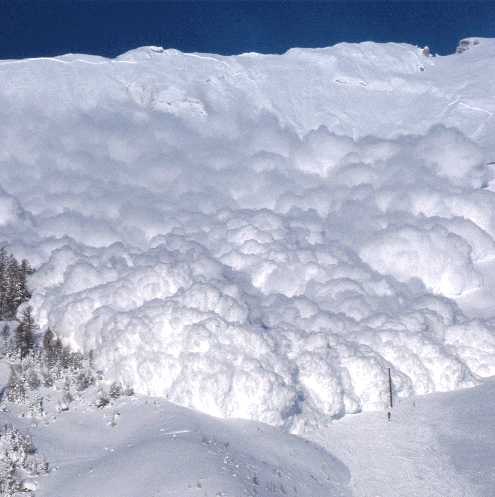Early Season Avalanche Awareness
 It’s been snowing in Colorado… a lot. I can’t remember the last time there was this much snow up high this time of year, though my friends tell me two years ago they were getting faceshots. Maybe on tele skis, while dodging between weeds. Or maybe they smoked too much weed. Either way, there is a lot of snow up high, and folks are already running up against that which plagues us all winter: avalanches.
It’s been snowing in Colorado… a lot. I can’t remember the last time there was this much snow up high this time of year, though my friends tell me two years ago they were getting faceshots. Maybe on tele skis, while dodging between weeds. Or maybe they smoked too much weed. Either way, there is a lot of snow up high, and folks are already running up against that which plagues us all winter: avalanches.
One occurred in Rocky Mountain National Park on the Dreamweaver Route. From the CAIC website:
“The first avalanche incident of the new season was reported from Mt Meeker in Rocky Mountain National Park on October 5th. The small slab broke loose about 6 inches deep and 40 feet across and took two climbers on a short ride, with no injuries. The slide ran on the lower, or first pitch, of the Dream Weaver alpine climb. This route is located on the east side of the prominent north aspect buttress of 13,911 foot Mt Meeker. The first pitch ramps up to 50 degrees in some places. This route can see significant cross-loading deposit any fresh snow as slab at several areas along the route, though primarily at the first and last pitches.”
Another happened close to here, on Grizzly Peak. Some skiers climbed up the prominent couloir on the north face and had just started their descent when a large hard slab pulled out and ran 1500′. Could have been very serious, thankfully no one was injured. You can read the full account here.
The CAIC has some helpful hints to keep in mind when dealing with early season avalanche conditions:
- Fall and a taste of winter have returned to Colorado’s high country. Snow began to stick on the higher terrain by mid-September. Every season people have encounters with wintertime slab avalanches as early as August or September. Anyone traveling in the mountains, including hikers, hunters, sledders, skiers, riders and ice climbers, needs to be aware of the avalanche threat as soon as snow starts to accumulate on steep slopes.
- People are often misled when they see grass and brush sticking out of the snow surface. You should start thinking about avalanches any time you have snow resting on a steep slope. Remember, all you need is a slab resting on a weak layer of snow. The ground can easily act as a bed surface, even if it’s only a few inches below the snow surface.
- Old summer snow fields can act as the perfect bed surface too. Hard frozen old snow with new snow on top are common culprits in early season avalanche incidents.
- Early in the snow season there is not much snow on the ground. This means that rocks and stumps are near the snow surface. If you get caught in an avalanche you might get tumbled through rocks, stumps, and downed timber. These obstacles can do great bodily harm to backcountry users traveling through them at high speeds. Knee pads, helmets and full body armor may not be a solution to this problem. Even a very small slide can cause great harm if the terrain is unfriendly.Don’t let an early-season injury ruin your winter!
- Wind drifts will create thicker slabs. Strong winds can take a three inch snowstorm and quickly build an 18” wind slab. Areas with shallow snow may be very close to deep drifted areas. It may be to move from a very safe area to a very dangerous area without traveling very far. The wind drifts will be denser than the new snow and thick hard snow on light fluffy snow is a great setup for avalanching.
- Once the sun returns after a storm cycle and warm temperatures cause the new snow to melt, look to see where the pockets of snow remain. The snow that lingers in sheltered areas and shady slopes could be the weak layer after the next snowfall. These areas could also become recurring problem areas throughout the winter depending on how the winter snowpack develops.
- Pockets of instability can develop quickly above early season ice climbs. Climbers should know the terrain above their route as rapid warming or heavy wind loading can quickly work to build slab or loose snow avalanches which can nudge a precariously perched climber into a bad fall.
- Hunters traveling across the high country need to exercise greater caution on steep terrain (steeper than 30 degrees with accumulated snow) when crossing ridges from one valley to another.
Be safe out there!
One Response to Early Season Avalanche Awareness
Bulldog Creek Dog Walk (IV WI 4+)
Hayden Carpenter and Tom Bohanon recently repeated an obscure ice climb on the south side of Mt Sopris. Given a brief mention in Jack Robert’s ice guide, Bulldog Creek Walk is described as being 100 meters of WI 4. What they found was seven pitches of ice in a remote setting that makes for one […]
Connect with Us















Thank you for posting early season avi info. We really appreciate your help!